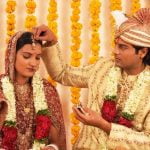Are you wondering how to formally address wedding invitations? Addressing wedding invitations is a crucial part of setting the tone for your special day and creating a sense of formality. The way you address your invitations conveys the level of respect and importance you attribute to your guests’ presence at your wedding. Understanding the traditional etiquette and rules of formal invitation addressing will help you ensure that your invitations are both elegant and respectful.
The proper addressing of a wedding invitation can be a subtle, yet impactful nod to tradition, reflecting the significance of the occasion. Whether it’s addressing married couples, families, or different types of guests, there are certain guidelines to follow for formal event invitations. From the outer envelope to handling special scenarios like divorced or same-sex couples, mastering the art of formal address in wedding invitations can set the stage for an elegant and organized event.
In this article, we will delve into the traditional etiquette and rules of formal address for wedding invitations. We will also provide a step-by-step guide on properly addressing both the outer and inner envelopes.
Additionally, we will offer tips on how to address various types of guests and tackle special scenarios, such as handling professional titles. By understanding these basics, you’ll be well-equipped to create beautifully addressed wedding invitations that reflect the significance of your special day.
Understanding the Basics
When it comes to formal wedding invitations, there are certain traditional etiquette and rules that should be followed to ensure your invitations set the right tone for your special day. Understanding these basics is crucial in creating an elegant and organized event. Here are some key points to keep in mind when addressing wedding invitations:
- Use titles and full names: When addressing the outer and inner envelopes, always use appropriate titles such as Mr. Mrs. Dr. or other professional titles. It is also important to include the full names of the recipients.
- Proper use of titles: For married couples, the husband’s name should come first, followed by his wife’s name. If the couple has different last names, it is best to write them on separate lines
- Avoid abbreviations: It is considered proper etiquette to spell out all words in the address, including writing out the full name of the state instead of using abbreviations.
Understanding these basic rules will help you create a formal and respectful tone for your wedding invitations. By following these guidelines, you can ensure that your guests feel honored and respected as they receive their invitations.
Additionally, familiarizing yourself with traditional wedding invitation etiquette can help you avoid any potential social faux pas or misunderstandings. When in doubt, it is always best to err on the side of formality when addressing wedding invitations. This attention to detail will not go unnoticed by your guests and sets a standard for your upcoming nuptials.
The Outer Envelope
When it comes to sending out wedding invitations, the outer envelope sets the tone for your guests and gives them a sneak peek of what to expect. It is crucial to ensure that the outer envelope is addressed correctly to convey the formality and elegance of your wedding. Here is a step-by-step guide on how to properly address the outer envelope for your wedding invitations.
Step 1: Names and Titles
The first step in addressing the outer envelope is to write the names of the recipients. For married couples, it is traditional to use both their full names, with titles such as “Mr. and Mrs. John Smith.” If the couple does not share a last name, write both names fully, such as “Ms. Jane Doe and Mr. John Smith.” For unmarried couples living together, list their names alphabetically on separate lines.
Step 2: Address
Underneath the recipient’s name, include their address in full, including their street address, city, state, and zip code. It is essential to ensure that all addresses are accurate and complete to avoid any confusion or lost invitations.
Step 3: Guest Name
If you are inviting single guests or those who are not part of a couple living together, make sure to address the invitation specifically to them by using their full name. Avoid generic titles such as “and guest” as it may come across as impersonal.
By following these steps and ensuring that each detail is accurate and respectful, you can set a formal and elegant tone for your wedding right from the moment your guests receive their invitations in the mail. The outer envelope serves as an introduction to your special day, so taking care in addressing it will surely leave a lasting impression on your guests.
The Inner Envelope
Purpose of the Inner Envelope
The inner envelope is traditionally used to protect the invitation suite and ensure that it arrives in pristine condition to the intended recipients. It also serves as a way to convey additional information, such as specifying who exactly is invited, including children or plus ones. The inner envelope can also be seen as an opportunity to add a personal touch, allowing you to include extra items such as personalized notes, additional enclosure cards, or even small gifts.
Proper Way to Address the Inner Envelope
When addressing the inner envelope, it is essential to follow certain etiquette rules. The names on the inner envelope should be less formal than on the outer envelope, allowing for more inclusivity and personalization. For married couples with children, it is appropriate to use only their titles and surnames without their first names. For example, “Mr. and Mrs. Smith” or “Dr. and Mrs. Johnson.” If adult children are living at home, they should receive their own separate invitation.
In cases where children are not included in the inner envelope address abbreviation “Miss”, “Ms.”, or “Mstr.” can be used before their name.
These details may seem minor but following proper etiquette when addressing this smaller envelope adds a touch of elegance and thoughtfulness that will surely be appreciated by your guests.
Addressing Different Guests
When it comes to addressing wedding invitations, it’s important to understand the proper etiquette for various types of guests. For married couples, the traditional way to address the outer envelope is to write “Mr. and Mrs. John Smith.” If both partners have different last names, include both full names: “Mr. John Smith and Mrs. Jane Johnson.” For unmarried couples who live together, it’s appropriate to address the invitation as “Ms. Jane Johnson and Mr. John Smith”.
When inviting families, list the parents’ names on the outer envelope followed by “and Family” or “and Children” on the inner envelope if kids are invited. For example, “Mr. and Mrs. John Smith and Family.” When children are not invited, only include the parents’ names: “Mr. and Mrs. John Smith”.
Inviting children to a wedding can be a bit more complex because you’ll need to consider their ages and how they should be included in the invitation. Younger children can simply be included on their parents’ invitation, while older children (such as teenagers) should receive their own separate invitation.
Overall, understanding how to formally address wedding invitations for various types of guests is essential for setting the tone of your event and ensuring that everyone feels properly included and respected in your celebration.
Special Scenarios
When it comes to addressing wedding invitations for divorced or separated couples, same-sex couples, and those with professional titles, it’s essential to be mindful of proper etiquette and sensitivity. For divorced or separated couples, the standard practice is to send separate invitations to each individual. If one member of the couple will be attending with a guest, their name should be listed first on the envelope followed by “and Guest”.
For same-sex couples, the guidelines are the same as they would be for heterosexual couples. The names should be listed in alphabetical order on the outer envelope and addressed using appropriate titles on the inner envelope. It’s important to remember that etiquette does not make a distinction between same-sex and opposite-sex couples when it comes to wedding invitation addressing.
When addressing individuals with professional titles such as doctors, military personnel, or elected officials, it’s crucial to use their proper titles and follow traditional etiquette. For example, for a doctor and his/her spouse, the outer envelope may read “Dr. John Smith and Mrs. Emily Smith” while the inner envelope can include first names only. Additionally, military personnel should have their rank included in their title when addressing wedding invitations.
In handling these special scenarios in wedding invitation addressing, being thoughtful and considerate is key. Ensuring that each person is addressed correctly shows respect and consideration for your guests’ personal situations and identities.
| Special Scenarios: Addressing Invitations | Data |
|---|---|
| Divorced or Separated Couples | Send separate invitations; if one member brings a guest, list their name first followed by “and Guest” |
| Same-Sex Couples | List names in alphabetical order; use appropriate titles; no distinction between same-sex and opposite-sex couples |
| Professional Titles | Use proper titles for doctors, military personnel; include rank for military personnel |
Additional Tips
After correctly addressing the outer and inner envelopes for your wedding invitations, there are additional tips and advice to consider when finalizing your formal address. These extra details can contribute to the overall elegant and organized presentation of your event.
Handling RSVPs
When sending out your wedding invitations, it’s essential to include a response card and self-addressed stamped envelope for guests to easily indicate whether they will attend. Make sure to clearly specify the deadline for RSVPs, typically around 4-6 weeks before the wedding date. This will allow you enough time to finalize the guest count with your caterer and venue.
Accommodation Cards
If you have out-of-town guests attending your wedding, providing accommodation information is a thoughtful gesture. Accommodation cards can be included in the invitation suite to inform guests about hotel options, room blocks, and any booking deadlines or special rates. This extra touch shows consideration for your guests’ comfort and convenience during the celebration.
Additional Tips for Formal Addressing
- Double-check spelling: Ensure that all names and addresses are spelled correctly to avoid any embarrassment.
- Clear instructions: Include clear instructions on how guests should properly fill out their response card, such as indicating meal preferences or dietary restrictions.
- Personalized touches: Consider adding a personal note or embossed monogram to each invitation for a special touch that reflects your personality as a couple.
By paying attention to these additional details when addressing wedding invitations, you can create a seamless and polished experience for both you and your guests. These small touches contribute to the overall elegance of your wedding celebration.
Conclusion
In conclusion, understanding the proper etiquette and rules of addressing wedding invitations is crucial for setting the tone for a formal and elegant event. The way in which invitations are addressed communicates a level of respect and formality that reflects the importance of the occasion. By following traditional guidelines and properly addressing both outer and inner envelopes, couples can create an organized and sophisticated atmosphere for their wedding.
Addressing different types of guests, such as married couples, families, children, as well as special scenarios like divorced or separated couples, same-sex couples, and those with professional titles can be a delicate task. However, with the right knowledge and attention to detail, all guests can be properly acknowledged and included in the invitation process. Additionally, providing extra tips on handling RSVPs and accommodation cards ensures that guests are informed and able to respond appropriately.
Overall, by paying careful attention to addressing wedding invitations in a formal manner, couples can create an elegant and organized event from the very beginning. This attention to detail sets the stage for a special celebration that will be remembered for years to come. In addition to creating an atmosphere of sophistication, it also shows respect for guests by acknowledging them in a thoughtful manner. Following these guidelines will ultimately contribute to a beautiful and harmonious wedding day.
Frequently Asked Questions
What Is the Formal Way to Address a Wedding Invitation?
The formal way to address a wedding invitation is to include the full names of the hosts, the full names of the couple getting married, and the date, time, and location of the ceremony and reception.
How Do You Address a Formal Envelope to a Married Couple?
When addressing a formal envelope to a married couple, it’s important to use their full names, including titles such as “Mr.” or “Mrs.” It’s also proper etiquette to use their last name after their title.
Do You Have to Put Mr and Mrs on Wedding Invitations?
The decision to put “Mr. and Mrs.” on wedding invitations depends on personal preference and tradition. While some couples may choose to use this traditional form of address, others may opt for more modern or inclusive language when addressing their invitations. Ultimately, it’s up to the couple to decide what feels right for them and their guests.

Welcome to my blog about home and family. This blog is a place where I will share my thoughts, ideas, and experiences related to these important topics. I am a stay-at-home mom with two young children. I hope you enjoy reading it! and may find some helpful tips and ideas that will make your home and family life even better!





